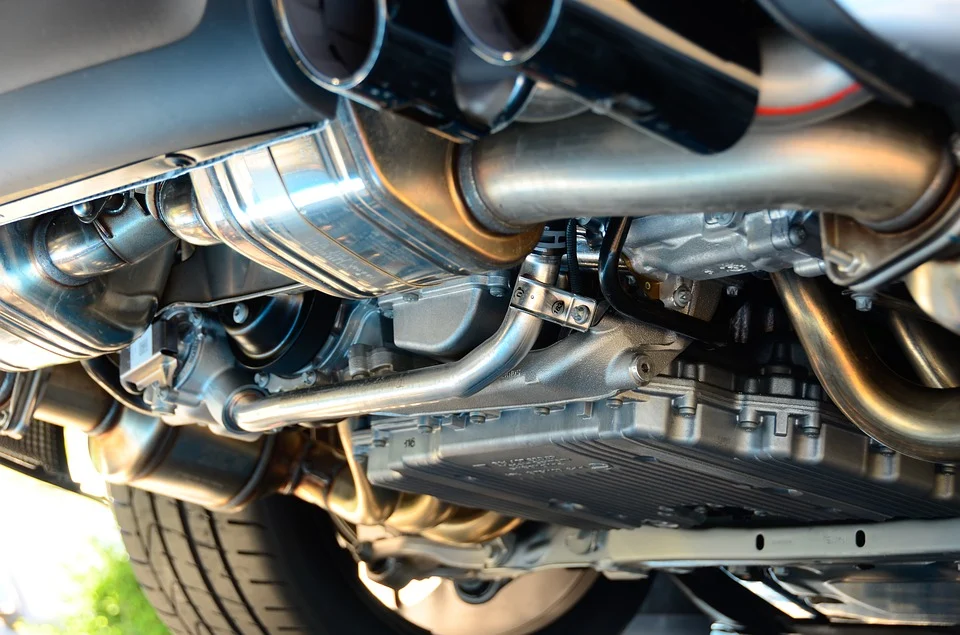In this blog article, you’ll learn about the many benefits of an engine exhaust system. Engine exhaust systems are essential for your car’s safety and performance, since they help your vehicle run at its top level. This blog is perfect for the avid car owner who wants to keep their vehicle in the best condition possible.
What is an Exhaust System?
An exhaust system is a device that helps to release the pollutants produced by a car’s engine. This system includes the exhaust pipe, muffler, and catalytic converter.
The goal of an exhaust system is to reduce the amount of pollution that is released into the air. This is important because pollution is a major contributor to climate change. Hence it is important to purchase exhaust systems from professionals like XFORCE.
An exhaust system can also improve the performance of a car. By reducing the amount of heat that is released from the engine, an exhaust system can help to increase fuel efficiency. In addition, an exhaust system can create a “sporty” look on a car.
Why do you need an exhaust system?
An engine exhaust system is a crucial part of your car’s engine. It helps to eliminate pollution and noise from your car.
An exhaust system consists of two parts: the muffler and the tailpipe. The muffler is the smaller of the two and it’s located near the engine. It’s made from metal or plastic and it’s designed to reduce the noise that’s produced by the engine.
The tailpipe is the larger of the two and it’s located near the back of your car. It’s made from metal or plastic and it’s designed to reduce the pollution that’s produced by your car.
An exhaust system is essential for safe driving. It helps to reduce pollution and noise, which are two of the leading causes of traffic delays.
What are the benefits of an exhaust system?
An engine exhaust system is a system that helps to prevent pollution from entering the environment. An exhaust system consists of several components, including a muffler, a catalytic converter, and an oxygen sensor.
A muffler is a device that converts the noise from the engine into a quieter sound. It is located near the tailpipe of the car, and it helps to reduce the noise levels produced by the engine.
The catalytic converter is a device that helps to reduce the amount of pollution produced by the engine. The converter converts harmful pollutants into harmless forms.
The oxygen sensor is a device that monitors the level of oxygen in the air. When the level of oxygen becomes too high, it triggers the engine to stop running. This prevents pollution from entering the air stream, and it also protects the engine from damage.
How to install an exhaust system?
An engine exhaust system is a vital part of your car’s engine. It helps to get rid of harmful emissions that are produced by the car.
There are several ways to install an exhaust system. You can either buy an exhaust system premade, or you can install it yourself. If you decide to install it yourself, you will need to remove the original exhaust system. You will then need to install the new system.
There are a few things to keep in mind when installing an exhaust system. First, make sure that the system is designed for your car. Second, make sure that the system is installed properly. Finally, make sure that the system is maintained properly.
Things you need before installing an Exhaust System
- Before you install an engine exhaust system, you’ll need to have a few things in hand. Here are the basics:
- The vehicle’s Certificate of Origin (COV) must list the installation of an exhaust system.
- The vehicle must be registered in your name.
- You must have a valid driver’s license.
- The vehicle must meet the legal requirements of your state.
- The vehicle must have the correct exhaust system equipment.
Once you’ve gathered these items, follow these steps to install your engine exhaust system:
- Remove any obstructions from the exhaust system tubing. This includes anything that could reduce the flow of air into and out of the system, like insulation or excess cable ties.
- Make sure the tubing is secure and free from kinks or bends. You can use clamps or duct tape to hold it in place while you’re working.
- Connect one end of the tubing to the muffler on the engine (or to a similar location on another vehicle). Connect the other end to your emissions control device, such as a catalytic converter or a fuel injection kit. If you’re using an aftermarket emission control device, make sure it meets

